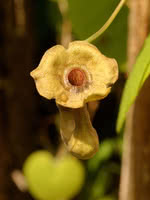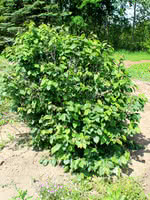Mon-Fri 9am - 5pm Mountain time
Beaked Hazelnut vs Dutchmans pipe
Aristolochia macrophylla
Corylus cornuta
NOT AVAILABLE THIS SEASON - MIGHT RETURN
NOT AVAILABLE THIS SEASON - MIGHT RETURN
The Dutchman’s Pipe is a fast growing, deciduous, woody, climbing vine. Featuring large heart-shaped leaves that overlap and often hide the flowers. The Dutchman’s Pipe namesake comes from the long yellow-green, brown or purple flowers that flare at the end, resembling Dutch smoking pipes.
The Dutchman’s Pipe will make a great screen or shade in your urban landscape, but does require support from a trellis or a fence. To control the growth, cut back in late winter.
Beaked Hazelnut is a multi-stemmed, deciduous shrub native to North America.
It features smooth, grey bark and edible nuts. Beaked Hazelnut prefers a rich sandy-clay loam but will grow on poorer sites, and can be used as an understory shrub.
Note: You want more than one hazelnut to improve yields.
Dutchmans pipe Quick Facts
Beaked Hazelnut Quick Facts
Toxicity: toxic/poisonous to people and animals

